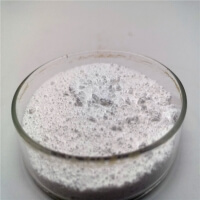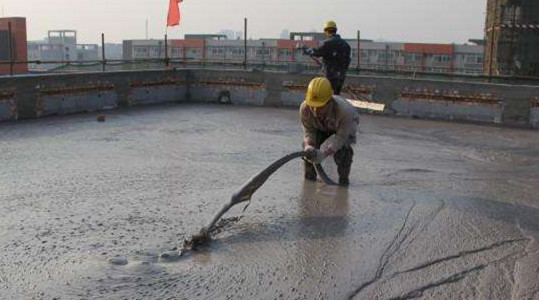Professional solutions on concrete addtives, Concrete Foaming Agent, Superplasticizer, CLC Blocks Additives, and foaming machine
(Where is foamed concrete used?)
Building thermal insulation
Foam concrete can be used as a thermal insulation material for buildings to isolate the temperature difference between indoors and outdoors and keep the indoor temperature stable.
Roof insulation: Using concrete insulation materials on the roof can effectively prevent the impact of solar radiation and outdoor temperature on indoor temperature, thereby reducing the energy consumption of air conditioning and heating equipment.
Exterior wall insulation: Using concrete insulation materials on exterior walls can effectively reduce the impact of outdoor temperature on indoor temperature and improve the thermal insulation performance of the building.
Floor insulation: The use of concrete insulation materials in the floor can effectively prevent the heat from the ground from transmitting to the room and boost the thermal insulation performance of the building.
Door and window insulation: The use of concrete insulation materials in doors and windows can effectively reduce the impact of outdoor temperature on indoor temperature and improve the thermal insulation performance of the building.
Foundation reinforcement
Foam concrete can be used to reinforce foundations, fill underground voids, and improve the stability of the foundation.
Concrete mixing pile reinforcement technology: Concrete mixing pile is a commonly used foundation reinforcement technology. It mainly uses mixing machinery to forcefully mix cement and soil to form a new composite foundation. This kind of foundation has high load-bearing capacity and stability and can effectively improve the overall strength and stability of the foundation.
Concrete cast-in-place pile technology: Concrete piles are a foundation reinforcement technology that pours concrete into the foundation by drilling or digging holes. This technology can be applied to various complex geological conditions and construction environments and can provide greater bearing capacity and stability.
Prestressed concrete pipe pile technology: Prestressed concrete pipe piles are a new type of foundation reinforcement technology, which mainly increases the load-bearing capacity and stability of pipe piles by applying prestress inside the pipe piles. This technology has the advantages of fast construction speed, short construction period, and high bearing capacity and is widely used in various types of building foundation reinforcement projects.
Concrete shot reinforcement technology: Concrete spray reinforcement technology is a technology that uses special spray equipment to spray concrete onto the surface of the foundation to increase the load-bearing capacity and stability of the foundation. This technology can be applied to several types of foundation reinforcement projects and has the advantages of fast construction speed and short construction period.
Roadbed filling
Foam concrete can be used for roadbed filling to reduce the road's burden and improve the road's bearing capacity.
Concrete pouring piles: Concrete pouring piles are a commonly used roadbed filling method. Concrete is poured into the foundation by drilling or digging holes to improve the bearing capacity and stability of the foundation.
Concrete pavement cushion: In road construction, a concrete pavement cushion can be installed between the road surface and the base layer to increase the load-bearing capacity and stability of the road surface.
Slope reinforcement: In road construction, concrete can be used to reinforce slopes to improve their stability and durability.
Crack repair: Cracked subgrade or pavement can be repaired with concrete to restore its load-bearing capacity and durability.
Fire insulation
Foam concrete is a good thermal insulation material and can be used for fire insulation, sound insulation, etc.
Building structure: The use of concrete as a fire-proof and heat-insulating material in building structures can improve the fire-proof performance and durability of the building. For example, the core structure of a high-rise building can be made of reinforced concrete to enhance its fire protection and thermal insulation properties.
Transportation facilities: Concrete is also widely used in the field of fire protection and heat insulation in transportation facilities. For example, concrete fireproof insulation materials can be used in walls, ceilings and other parts of public transportation facilities such as subways and high-speed rails to improve their fireproof performance.
Other fields: In addition to building structures and transportation facilities, the application of concrete in the field of fire insulation also includes nuclear power plants, petrochemical industry and other fields. Concrete is widely used in structural measures for fire protection and thermal insulation in these areas.
Environmentally friendly building materials
Foam concrete is an environmentally friendly building material that can replace traditional bricks, concrete and other materials to decrease the generation of construction waste.
With the continuous improvement of environmental awareness, people's requirements for building materials are also getting higher and higher. Environmentally friendly building materials must not only meet the structural safety and functional requirements of the building, but also meet environmental protection, energy saving, recyclability and other requirements. As a common building material, concrete has excellent durability, plasticity, economy, and environmental protection properties.
Construction field: In the construction field, lightweight concrete and green concrete are widely used in insulation and sound insulation layers of walls, floors, roofs, etc. High-performance concrete is used in the foundation and structural parts of buildings such as high-rise buildings and bridges.
Road field: In the road field, recycled concrete is used for pavement paving, which has good road performance and environmental protection effects. At the same time, high-performance concrete is also widely used in road projects such as highways, bridges and tunnels.
Bridge field: In the bridge field, high-performance concrete is used in the main load-bearing structures and piers of bridges, and has high load-bearing capacity and durability. Green concrete is also used in parts such as bridge decks and guardrails, which has good landscape effects and environmental protection performance.
Development Trend of Concrete Environmentally Friendly Materials
With the sustainable improvement of environmental awareness and the continuous development of technology, the development trend of concrete environmentally friendly materials mainly includes the following aspects:
Develop new environmentally friendly additives and mix ratio technologies further to improve concrete's environmentally friendly performance and durability.
Strengthen research on recycled concrete's production and application technology and realize the resource utilization of construction waste.
Promote the application scope of green concrete and integrate environmental protection concepts into more concrete materials.
Establish a complete production and use standard system to standardize the production and application of environmentally friendly concrete materials to ensure that they meet environmental protection and quality requirements.
Energy saving and emission reduction
Because of foam concrete's good thermal insulation performance, its use can reduce energy consumption and achieve the influence of energy saving and emission reduction.
The application of concrete in energy conservation and emission reduction is mainly reflected in the following aspects:
High-performance concrete: By using high-performance concrete, it is possible to reduce the amount of cement used while meeting the structural needs of the building, thereby reducing carbon emissions during the production process. High-performance concrete has high strength, high durability and high workability, which can increase the service life and energy saving effect of buildings.
Recycled concrete: Recycled concrete is a type of concrete produced using waste concrete or construction waste as the main raw material. This not only reduces the consumption of natural resources, but also reduces the impact of construction waste on the environment. Through the resource utilization of recycled concrete, the carbon emissions of raw materials can be reduced, also energy conservation and emission reduction can be achieved.
Green concrete: Green concrete is an environmentally friendly concrete that uses environmentally friendly materials and environmentally friendly processes during its production, thereby reducing energy consumption and emissions during the production process. At the same time, green concrete also has good environmental performance during use, such as low thermal conductivity and good thermal insulation properties, which can reduce the energy consumption of buildings.
Optimize the concrete production and construction process: During the concrete production and construction process, energy consumption and emissions can be reduced by optimizing equipment, improving processes, and using advanced production technology. For example, using efficient mixing equipment and transportation equipment can reduce equipment energy consumption; optimizing concrete mix ratios and construction plans can reduce waste and improve production efficiency.
Supplier
TRUNNANO is a supplier of foaming agent of concrete and other additives, which is concrete and relative products with over 12 years experience in nano-building energy conservation and nanotechnology development. It accepts payment via Credit Card, T/T, West Union and Paypal. Trunnano will ship the goods to customers overseas through FedEx, DHL, by air, or by sea. If you are looking for high-quality foaming agent of concrete and other additives, please feel free to contact us and send an inquiry. (sales@cabr-concrete.com)
(Where is foamed concrete used?)






